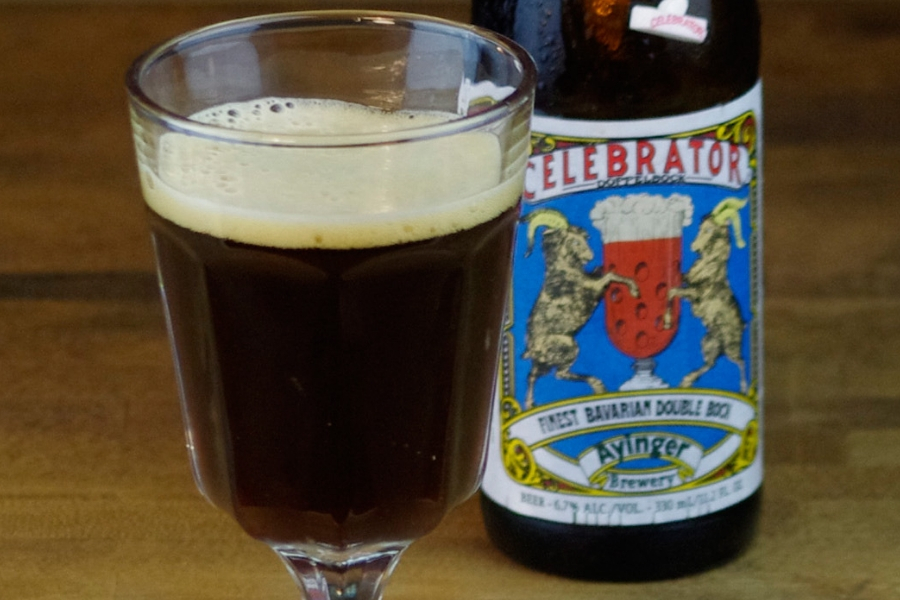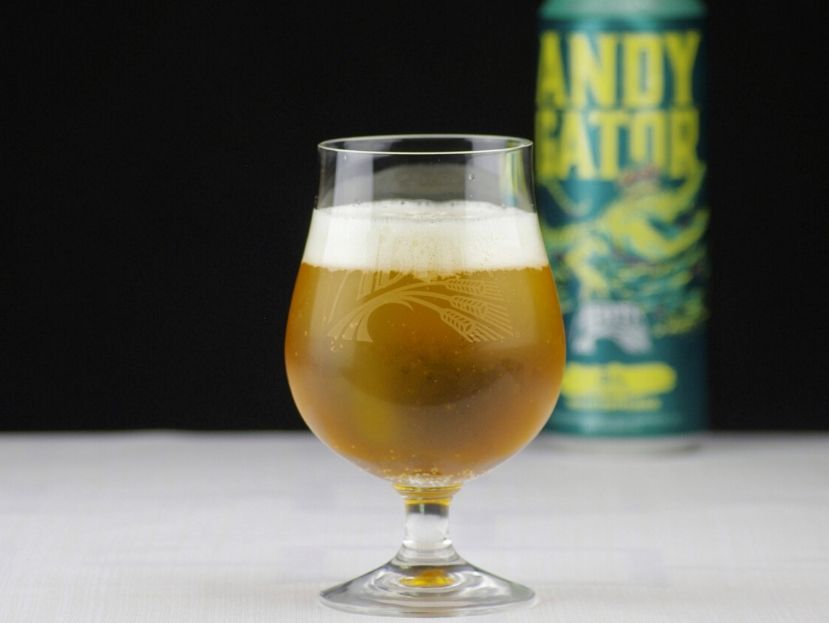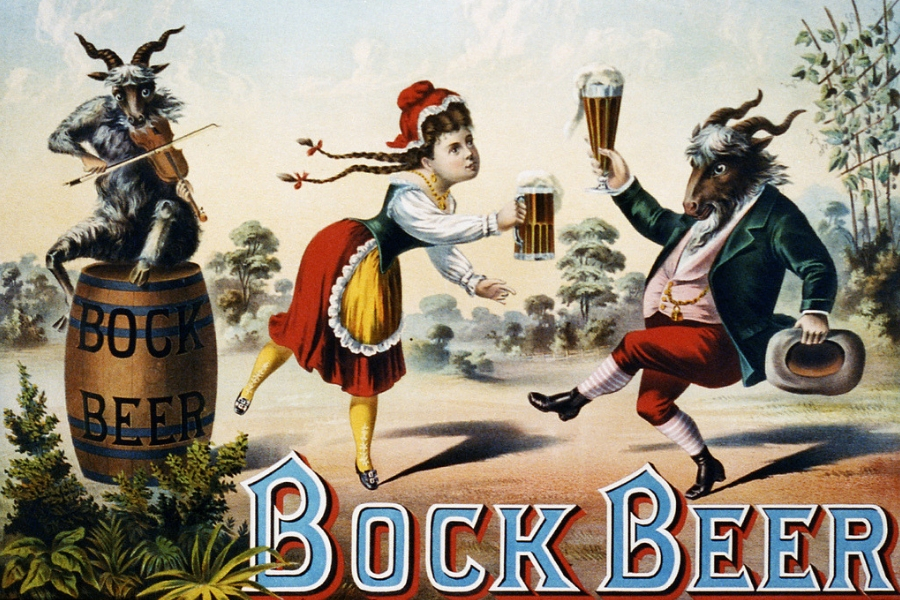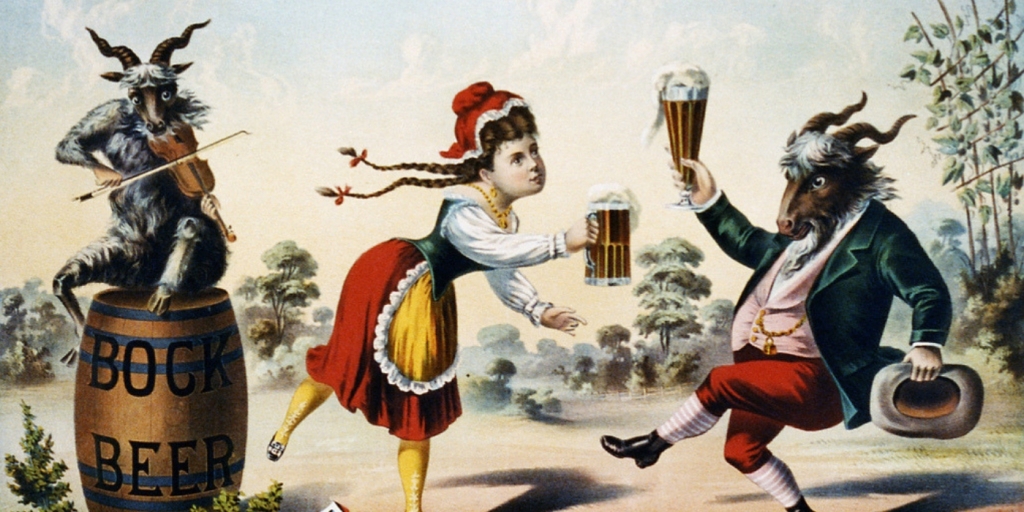Bock basics, exploring a Bavarian classic.
—by Melissa Maki
Bock means “billy goat” in German. It’s a fitting name for this robust beer style that dates back to the Middle Ages since its elevated alcohol content gives it a good kick. The hearty nature of the style made it a favored source of nutrition among fasting monks. Traditional bocks are strong, yet surprisingly smooth Bavarian lagers with a slight sweetness and a pronounced, malty character.
The color of bock beers can range from amber to dark brown. Most have a mild to unrecognizable hop presence—only enough bitterness to help balance the sweetness and enrich the overall flavor. A typical bock weighs in at 6 percent alcohol by volume (ABV) or more. To help put this number into perspective, standard, mass-produced American lagers measure between 4-5 percent ABV.

There are a number of interesting variations within the bock style; chief among them is the doppelbock, or “double bock.” Doppelbock is a stronger version of the style. It starts at around 7 percent ABV but can be as strong as 14 percent. The suffix “ator” is often used to denote a doppelbock. This tradition is a nod to Salvator, the original doppelbock, which was created by the Paulaner monks of Munich in the 17th century. Ayinger Celebrator is another classic Bavarian doppelbock. Doppelbocks are sometimes called Fastenbier (“Lenten beer”) because the monks subsisted on this “liquid bread” when abstaining from solid foods in the weeks before Easter.
Maibock or “May bock” is a lighter version of the bock style. While the standard bock and doppelbock are hearty beers that are traditionally brewed in the fall to be enjoyed in the cold winter months, maibock is released in March and is meant to be drunk in the spring. Maibock color ranges from gold to amber. Its flavor is not as malty as traditional bocks, which allows the bitterness of the hops to emerge. Maibocks don’t usually exceed 8 percent ABV.

Ancient History
Bock’s historical roots are said to date back to the Middle Ages. The town of Einbeck, Germany claims the style as its own. The Einbecker Brewery, established in 1378, proudly asserts, “Without Einbeck, there would be no Bock beer!”
In the 14th century, Einbeck had the good fortune of being located in the midst of a prime, hop-producing region. This meant that the city’s brewers were early adopters of hops in the brewing process. Nearly all beers today are brewed with hops, but previously a blend of herbs called gruit was used to flavor beer. Hops add flavor but they also have a crucial, preservative quality. Using hops, Einbeck brewers were able to produce strong, dark ale that also traveled well.
Einbeck’s relationship with the Hanseatic League, a powerful trade association, ensured that the Einbeck beer was widely distributed, beginning in the late 1300’s. The League transported goods to 200 cities throughout Europe, from the North Sea to the Baltic Sea and beyond. The Einbeck beer received high accolades. Protestant Reformer Martin Luther famously declared, “The best drink known to man is called Einbecker beer.”
When the Munich elite got a taste for the Einbeck beer, they enlisted Einbeck’s master brewer to help them create their own version of the brew, which became the style that we are familiar with today. Bocks we drink today are unlikely to resemble their early predecessor because the beer morphed from an ale into a lager. The original Einbeck beer would be classified as ale—a beer fermented for a short time at warm temperatures. In Munich, the beer was fermented for longer at colder temperatures in order to produce a beer with a crisp finish and mellow character. The beer retained the name of its city of origin, but that too was altered over time. Perhaps because of the Bavarian accent, Einbeck morphed into “ein bock”—or what we know today as “a bock.”
Food Loves Bock
Bock is a versatile choice to pair with food and will complement a wide spectrum of cuisines. Its rich, malty flavor and sweetness will balance out spicy foods, including Thai and Mexican dishes. It will also pair well with smoked and grilled meats, sausages, and Swiss cheeses like Gruyere and Emmentaler. The chocolate and caramel flavors of a bock beer will also meld well with decadent, sweet desserts.
Bocks That Rock
We hope you find this guide to bock helpful. Here are a few of our favorite bock beers to get you started. Just click through to view tasting notes and pairing suggestions.

These beers are Food Loves Beer taste-tested and recommended! Looking for more articles like this? Be sure to check out our Beer collection.
Have something to say about this beer style? Did you enjoy reading about it? Is your favorite beer missing? Tell us in the comments section below. If you try any of the beers we recommend in this style, show us! We’d love to see what food you’re pairing with it. Snap a photo and share it with us on social media using the hashtag #foodlovesbeer and tag us @foodlovesbeer. We’d really appreciate it. Want to save it for later? Pin it!

Thanks for visiting Food Loves Beer! For more dish on food and beer culture, subscribe to Food Loves Beer magazine, like us on Facebook, and follow us on Instagram, Twitter & Pinterest. Remember, sharing is caring! Let other beer-loving (or beer-curious) foodies know about Food Loves Beer. Please share this post using the social media share buttons below.
Cheers!
